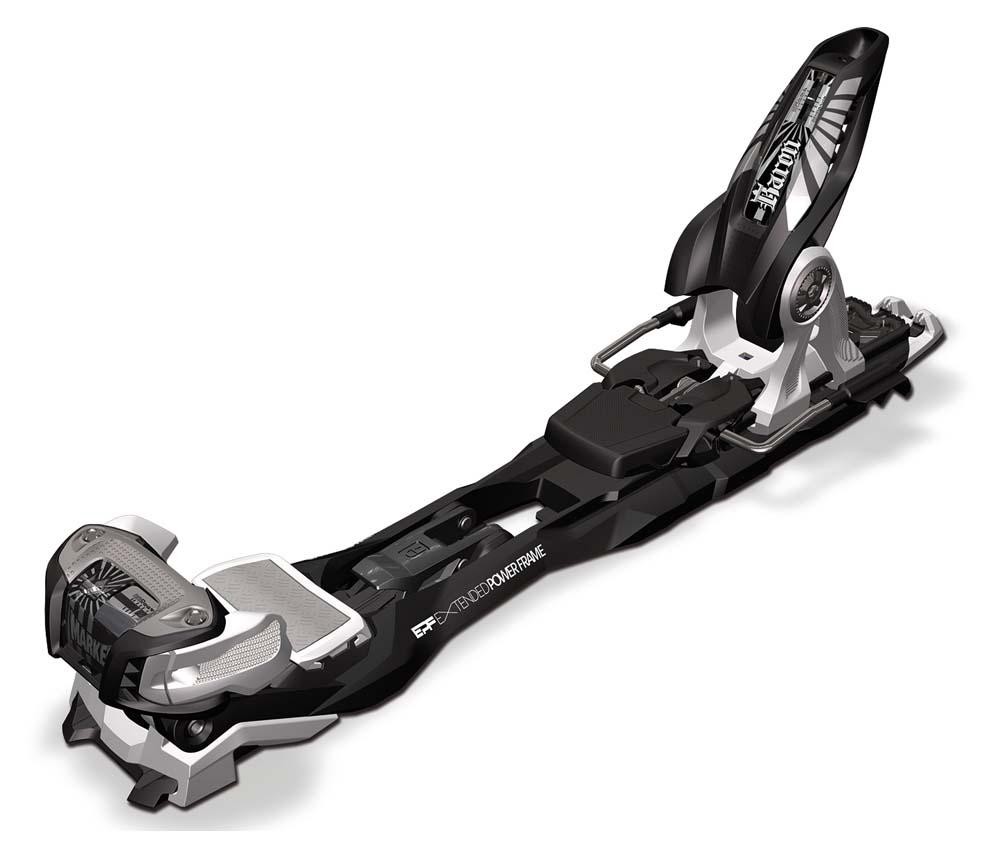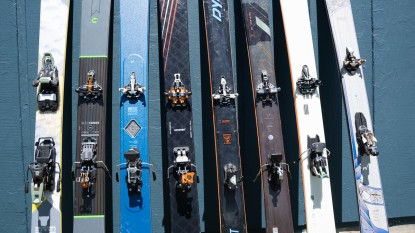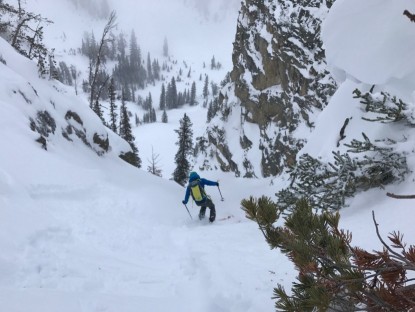Marker Baron 13 EPF Review
Our Verdict
Our Analysis and Test Results
Ease of Use
The Baron, like the Marker Duke, are a pair of bindings that are easier to get into compared to most touring bindings. For lighter users (sub 135 lbs), this model is noticeably easier than the Duke to get into, as the Duke's heel can be very hard to engage. All things considered, this binding is easier to step into than any tech style model; just insert the front of your boot into the toe piece and slam your heel down into position. The heel risers engage by flipping downward into position; we liked the risers, but felt they were among the most challenging to initiate of almost any design in our review.
Touring Performance
This contender is a more downhill focused binding; it's not a huge surprise that it was among the poorest performing touring bindings we tested because of its relatively heavy weight, inefficient pivot point, and marginally (more) evolved transitions. This contender doesn't tour as well as many other framed bindings like the Fritschi Freeride Pro, which features a more efficient pivot point, resulting in a more natural and energy saving stride. The Fritschi Freeride Pro is also one of the easier pair of bindings to get into, but doesn't offer quite as good of downhill performance as the Marker models. Our tests found that overall, (weight aside) the Duke and the Baron's touring performance was identical; both offer the same heel risers and the equal pivot point, though because the Baron is lighter, it has a marginal touring advantage.
Transitions
This model, along with similarly designed Duke, has one of the more involved transition processes of any binding we tested. No matter the circumstance, you'll have to take your boot out of the binding in order to transition from ski mode, from downhill mode, and vice versa. The leaver in the center of the binding (that is flipped to initiate the transition) takes a fair amount of pressure to switch over; some testers in our review team commented that at times, it was a borderline struggle. This leaver pushes the binding back 30 mm along rails, which initiates the transition from skinning to skiing. We noticed that these rails proved to be more prone to icing (a 3 mm plastic scraper goes a long way towards removing the ice) when compared with other frame style bindings. This model doesn't transition nearly as easily as the Fritschi Freeride Pro and only was slightly more challenging than the similar category binding, the Salomon Guardian MNC 16.
Downhill Performance
With only the exception of the Duke, and possibly the Salomon Guardian MNC 16, there is no touring binding that performs better on the downhill; this is where the binding truly excels and why we would buy this competitor. The same rails that are slightly prone to icing provide a ton of surface area and create a super positive binding-to-ski and boot-to-binding connection, with the binding essentially feeling and performing like a downhill binding, or at least as close as you can come to it in a touring binding.
The EPF features a 36 mm stack height, which is on the lower side of frame style bindings and is slightly lower than the Fritschi Freeride. The only frame style binding with a lower stack height is the Salomon Guardian MNC 16, which stands 10 mm lower at 26 mm. The EPF stands for “Extended Power Frame” and refers to Marker's latest design of widening both the screw pattern and the overall Chasis of their the binding. The widening was extended by 28% (when compared to the older version) and is used to up power transmission by increasing the overall leverage on the ski.
Durability
This model is tough and is one of the burlier bindings in our review; we'd even venture to say it's one of the most durable AT bindings available. While it isn't quite as durable as the Marker Duke, which features more metal (where this model features plastic), it remains the definition of a burly binding.
Weight
All of this model's toughness and excellent downhill performance does come at a weight penalty. At 5 lb 12 oz (2608g), it's one of the heavier bindings on the market, though it's still 6 oz lighter than the Duke and 12 oz lighter than the comparable Salomon Guardian MNC 16 at 6 lb 8 oz (2960g) per pair. This contender remains nearly twice as heavy as most tech binding options and is 1 lb 4 oz heavier than the Fritschi Freeride Pro.
Best Applications
This competitor is best for someone who is going to ski in-bounds 70% or more of the time and tour around 30% or less of the time. If you plan to tour more, we recommend getting a tech style binding, which will offer significantly lighter weight and noticeably more efficient touring; for folks that just want the option, or only occasionally go touring, this model is a great option.
Duke Versus Baron
Most users will do just fine with the Baron. While the Duke is beefier, and sports a DIN release value of 16, the truth is that this model's durability and 13 DIN are more than adequate for most users. If you feel like you are really hard on your gear, or you regularly run your release value above 12, the Duke might be for you.
Value and the Bottom Line
This is one of the better priced touring bindings on the market. It costs less than all the tech style bindings in our review, except for the Dynafit Speed Turn and is less expensive than all the frame style bindings we tested. For a fairly good price, you get a straightforward binding that will provide extremely solid downhill performance and alpine binding durability.
Conclusion
This competitor isn't the best all-around touring binding; in fact, it's far from it. What it does do fantastically is ski downhill. It gives you the ability to free your heel, slaps some skins on, and go touring if you so desire.




